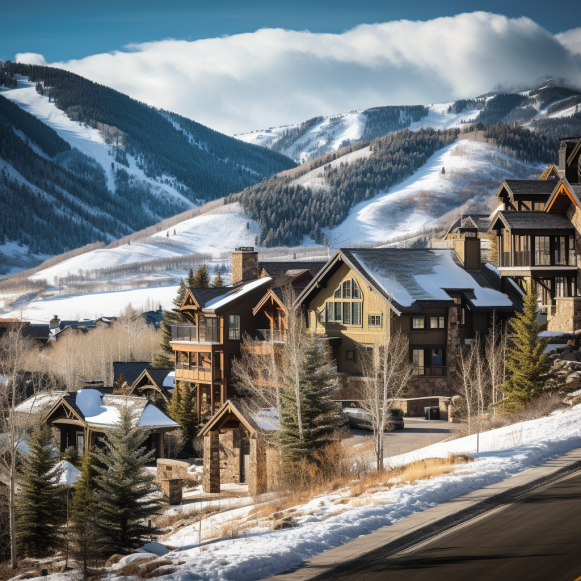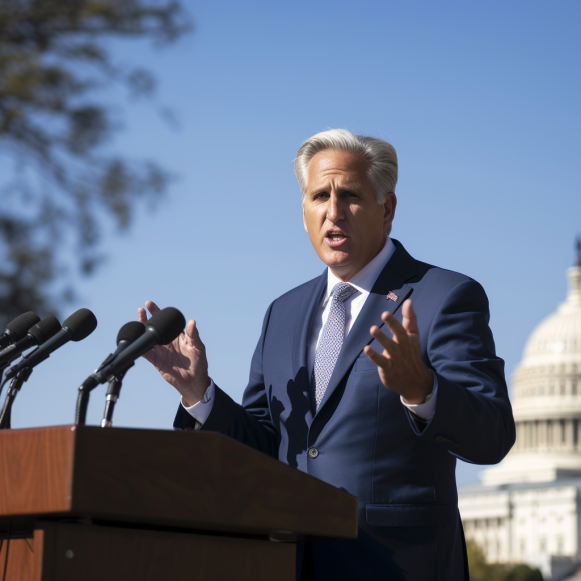Western states look to these lands for new affordable housing

Affordable housing is so scarce in Colorado’s Eagle County that school district leaders have pleaded with residents to open their spare bedrooms to teachers, citing the impossibility of hiring when employees have nowhere to live.
The county, which is home to popular ski resorts in Vail and Avon, has seen much of its housing snatched up for vacation homes and rentals. Furthermore, it lacks areas suitable for new development.
However, state leaders believe that a new approach could help with both the Eagle County crisis and the state’s housing shortage. They hope to develop 80 affordable housing units on a 3.5-acre parcel owned by the State Land Board. They’re also looking for other state lands that could be developed in areas with high housing demand.
“Colorado has a lot of state-owned land that is either completely vacant or underutilized in really key areas that could be suitable for workforce housing development,” said Eagle County state Sen. Dylan Roberts, a Democrat. “Taken in total, we’re talking about tens of thousands more units across the state.”
States across the West are grappling with both housing shortages and shifting ideas about how to manage millions of acres of state-owned land set aside to generate revenue primarily for public schools. State leaders in some places see an opportunity to invite development onto those lands in order to build more affordable housing.
Colorado celebrated the completion of a 103-unit affordable housing development on state trust land in Denver last year. In Albuquerque, New Mexico opened an affordable senior living community on trust land and recently approved a similar development across the street. Furthermore, Utah officials collaborated with a developer to include 120 affordable housing units in a project on trust land near the state’s southern border.
Nonetheless, states face numerous constraints in how they manage their lands. Leaders acknowledge that the majority of parcels are unsuitable for housing. And, as with most development proposals, states are likely to face opposition from residents who have differing views on how land should be used.
Trust properties
A vast swath of state-owned “working lands” blankets the Western landscape, primarily in 11 states where managers collectively oversee more than 40 million acres, roughly the size of Florida. Trust lands were granted to states as they joined the Union to provide a long-term funding source for schools and local communities.
Historically, states have raised funds by leasing trust lands for activities such as logging, mining, grazing, and oil and gas development. However, states have worked to diversify their revenue streams in recent years, adding campgrounds, wind and solar farms, condos, and carbon sequestration projects.
“There needs to be something that comes in to fill the void once we don’t have the revenue from oil and gas,” said Stephanie Garcia Richard, commissioner of public lands in New Mexico. “In addition to diversifying, we want to use state land to solve community problems and needs.”
As it happens, many of the states with the largest portfolios of trust lands, such as Arizona, Colorado, Utah, and Washington, are also experiencing some of the most severe shortages of affordable housing in the country.
Colorado Democratic Gov. Jared Polis directed state officials in 2019 to inventory state-owned land and identify parcels that could be leased or sold for affordable housing. Last year, the State Land Board, which manages 2.8 million acres of trust lands, issued a report identifying 16 parcels totaling more than 900 acres within cities’ existing boundaries, as well as another 64 parcels just outside city limits.
“In the majority of cases, trust land isn’t a suitable site for affordable housing, but in the instances where it is, it can work really well and essentially be a win-win,” said Kristin Kemp, the Land Board’s spokesperson. “Our mandate is to generate revenue for public schools by utilizing these lands.” We’d be delighted to enter into an agreement with a developer that includes a revenue stream for the Land Board.”
Earlier this year, Roberts sponsored legislation that will provide $13 million to support public-private partnerships to build housing on state-owned land. The money will be used by the state’s Public-Private Partnership Collaboration Unit to help finance projects, conduct engineering assessments, and build infrastructure to prepare parcels for development. The Eagle County project will receive $2 million.
“We’re using this as a template for what the state could do,” said Natriece Bryant, the agency’s director, noting that projects appear to benefit most from the type of financing available from the state.
In Washington, the state Department of Natural Resources has requested $3 million from lawmakers to improve infrastructure on trust land parcels where the state is attempting to promote affordable housing. The funds would go toward establishing a pilot project to connect sites to power, water, sewer, and roads, making it easier for affordable housing developers to pursue projects.
The agency’s portfolio contains approximately 7,000 acres of “transition lands,” which are mostly surrounded by other development and are no longer suitable for timber harvesting or agriculture. The department has investigated leasing, exchanging, or auctioning parcels to developers or local governments. Leaders at the agency hope that the effort will allow trust lands to play a larger role in providing affordable housing.
“We’re learning about it as we go,” said Kenny Ocker, an agency spokesperson. “I doubt many developers look to us and think, ‘Oh, they’re open for business.'” That is incorrect, but we do not immediately come to mind when people are looking to build in an area.”
Last year, New Mexico leaders completed the construction of an affordable senior living facility in Albuquerque on trust lands. According to Garcia Richard, the public lands commissioner, state officials, local government leaders, lenders, and developers collaborated with a “tapestry” of funding sources to make the project a reality. She stated that the state is considering additional proposals based on that template.
“We are now basically recruiting developers,” she went on to say. “New Mexico has just an unsustainable housing situation, and state lands exist in every single county of our state, in rural places and urban places.”
Difficulties
While some states tout the potential for housing on trust lands, leaders acknowledge that those objectives face numerous challenges. The vast majority of trust lands are scattered across the landscape in a checkerboard pattern, and the vast majority of parcels are in areas unsuitable for development or far from populated areas.
State land agencies frequently lack the expertise to develop land themselves, and requirements that they sell parcels at market rates frequently result in the pricing out of affordable projects. Officials are still determining which mechanisms — leases, land exchanges with local governments, and developer auctions — will be most effective in getting housing built. Furthermore, some agencies are overseen by boards that do not consider it a priority.
“Affordable housing is a very good option in some places, but the stars and moons have to all line up,” said Lisa Schneider, executive director of the National Association of State Trust Lands, a nonprofit consortium of state land managers. “It really just varies from state to state on what your land holdings happen to be and the governance of your agency.”
Some states claim that they are constrained by their obligation to manage the lands in order to provide school funding.
“Our mandate is to maximize revenue for our beneficiaries,” said Aaron Langston, the Utah School and Institutional Trust Lands Administration’s assistant managing director of real estate development. “All of our [suitable] parcels are in high demand from the development community, and they pay top dollar for them.” It’s difficult for us to say, ‘Let’s take less revenue to help solve the housing crisis.'”
Utah has begun to consider ways to promote affordable housing on trust lands, such as collaborating with local governments to implement zoning changes that allow for greater density. This enables the state to double the number of units in a development while still meeting revenue obligations, lowering renter costs. It is also looking into the formation of Public Improvement Districts, which can levy local taxes to fund infrastructure.
Unlike Utah, some states, such as Colorado, New Mexico, and Washington, claim that their constitutions allow them greater flexibility in managing trust lands for revenue while also taking into account other factors such as habitat, recreation, and community needs.
Meanwhile, officials in Alaska and Idaho have stated that their land agencies have not yet investigated policies or projects to promote affordable housing on trust lands.
Officials in those states acknowledge that, as with any development proposal, they had to deal with community concerns. While some residents are opposed to new construction or higher-density housing, others see state lands as treasured areas that must be protected.
Some state leaders have stated that they will not pursue development on parcels that provide critical habitat or recreational opportunities.
“Everyone has a connection to their public lands,” said Ocker of the Washington-based agency. “The places where we’re exploring this are isolated parcels that are already developed around, to the point where they’re not large or ecological contiguous enough to be managed for forestry.”





